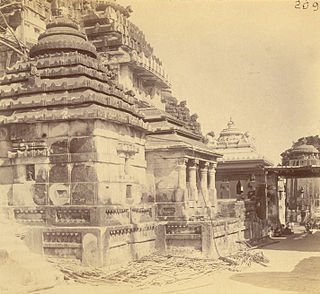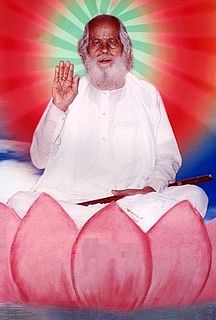
Odisha, formerly Orissa, is an Indian state located in Eastern India. It is the 8th largest state by area, and the 11th largest by population. The state has the third largest population of Scheduled Tribes in India. It neighbours the states of West Bengal and Jharkhand to the north, Chhattisgarh to the west, Andhra Pradesh to the south. Odisha has a coastline of 485 kilometres (301 mi) along the Bay of Bengal. The region is also known as Utkala and is mentioned in India's national anthem, "Jana Gana Mana". The language of Odisha is Odia, which is one of the Classical Languages of India.

Odia is an Indo-Aryan language spoken in the Indian state of Odisha. It is the official language in Odisha where native speakers make up 82% of the population, and it is also spoken in parts of West Bengal, Jharkhand and Chhattisgarh. Odia is one of the many official languages of India; it is the official language of Odisha and the second official language of Jharkhand. The language is also spoken by a sizeable population of at least 1 million people in Chhattisgarh.

Jagannath is a deity worshipped in regional Hindu traditions in India and Bangladesh as part of a triad along with his brother Balabhadra and sister, devi Subhadra. Jagannath within Odia Hinduism is the supreme god, Purushottama, Para Brahman. To most Vaishnava Hindus, particularly the Krishnaites, Jagannath is an abstract representation of Krishna, or Vishnu, sometimes as the avatar of Krishna or Vishnu. To some Shaiva and Shakta Hindus, he is a symmetry-filled tantric form of Bhairava, a fierce manifestation of Shiva associated with annihilation.
Baripada is a city and a municipality in Mayurbhanj district in the state of Odisha, India. Located along the east bank of the Budhabalanga river, Baripada is the cultural centre of north Odisha. In recent years, it has emerged as an educational hub with the opening of numerous professional colleges.

Boudh District is an administrative and a municipal district, one of the thirty in the Odisha, India. The district headquarters of the Boudh District is the city of Boudh.

Ananta Vasudeva Temple is a Hindu temple dedicated to Krishna, an avatar of Vishnu located in Bhubaneswar, the state capital of Odisha, India. The temple was constructed in the thirteenth century, and the complete murtis of Krishna, Balarama and Subhadra are worshipped there. The temple dates back to the period of Chandrika Devi, the daughter of Anangabhima III, during the reign of the king Bhanudeva. A commemorative inscription that marked the foundation of the temple can be found in the British Museum's collection.

Maharaja Sriram Chandra Bhanja Deo University, formerly North Orissa University (NOU), is a public university in the regional city of Baripada in the state of Odisha, India.
Odia literature is literature written in the Odia language, originating predominantly from the Indian state of Odisha. The modern Odia language is mostly formed from Tadbhava words with significant Sanskrit (Tatsama) influences, along with some loanwoards from Desaja, English, Hindustani (Hindi/Urdu), Persian, and Arabic. The earliest written texts in the language are around one thousand years old. The earliest Odia newspaper was Utkala Deepika, first published on August 4, 1866.
Jitamitra Prasad Singh Deo is an Indian historian and archaeologist. He is from Khariar, Nuapada, Odisha, India. He is the president of Khariar Sahitya Samiti. He is a famous archaeologist and authors of several books on Odisha. He has discovered of pre-historic rock art of Yogimath Donger, Ghat Ghumar rock art copper plates, gold coins of Sharabhapuriya dynasty, clay seal, stone seal of Panduvamshi dynasty, Kalachuri coins, terracotas, beads and sculpture of various types.

Chari Kshetra is a group of four holy regions in Odisha. When Vishnu killed the demon Gayasura, to commemorate the glory of his victory, he placed his Sankha (conch) in Puri, Chakra (disc) in Bhubaneswar, Gadaa (mace) in Jajpur and Padma (lotus) in Konark and they were known as Sankha Kshetra, Chakra Kshetra, Gada Kshetra and Padma Kshetra respectively.
Nilachala Kutir is a religious residence, formerly owned by Swami Nigamanananda, located in the holy city of Puri, India on the shores of the turbulent Bay of Bengal. Nilachala Kutir is a one-storey building situated near the "Swargadwara" landmark in Puri.

The Vimala Temple or Bimala Temple is a Hindu temple dedicated to goddess Vimala (Bimala), located within the Jagannath Temple complex in Puri in the Indian state of Odisha. It is generally regarded as a Shakti Pitha, among the holiest temples dedicated to the Hindu Goddess.
The Bhanja dynasty is a dynasty that originated in the Utkala region of modern Odisha before the Gupta Empire became an imperial power. The dynasty, of ancient Kshatriya lineage as documented by Hermann Kulke, succeeded the Vindhyatabi branch of the Nagas of Padmavati, who ruled from the Keonjhar district of Odisha and included Satrubhanja of the Asanpat inscription. The Bhanj later became feudatories of the Bhauma-Kara dynasty.

Brahma Abadhuta Sri Guru Dayanidhi Paramahansa was an Indian sadguru, yogi, mystic and a Hindu spiritual leader well known in India. He was associated with the shakti cult and viewed as a perfect spiritual master of gyan, yoga and prema or bhakti. His followers idealized him as their worshipped and beloved thakura (ठाकुर).
The Bhauma dynasty, also known as Kara dynasty, ruled in eastern India between 8th and 10th centuries. Their kingdom, called Toshala, included parts of present-day Odisha.
Gajapati Rāmachandra Deva I was the founder of the Bhoi dynasty of Khurda in Odisha, India. He became the ruler of Utkal after defeating Mukunda Deva in 1568. He was associated with Yaduvamsa of Mahabharata. The Odia populace gave him the title of "Thākura Rājā" as a mark of respect for renovating the damaged Hindu temples that were destroyed by the invasion of Kalapahad. He was titled as Vira Sri Gajapati Viradhi Viravara Pratapi Ramachandra Deva.
Kaptipada estate was one of the princely states of India during the period of the British Raj. It was located in eastern India and surrounded by Mayurbhanj state in north and west, Nilgiri state in east and Keonjhar state in south. The state was founded by Naga Chief Phanimukuta during the rule of Gajapati ruler Kapileswar Dev about the middle of 15th century A.D.










